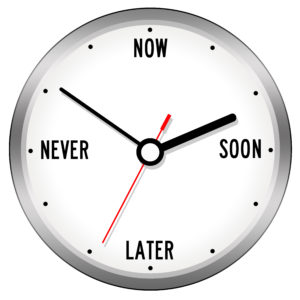One year into the pandemic, MS-Teams and Zoom meetings have become the new normal for most of us. What’s more, your clients are now routinely conducting most, if not all, short-list interview presentations remotely.
More so than an in-person interview presentation, video conferencing inherently has many variables that could distract your audience, undermine your confidence, and ultimately compromise your team’s chances for the award. The variables are compounded by the number of presenters you have and how many virtual sites are involved. If you have six presenters presenting from separate locations, that’s 6x more chances something could go wrong.
With proper preparation, you can reduce the chances for such distracting problems and you can deliver a more polished and professional presentation that outclasses your competitors. If you and your team members are equally polished, then your professionalism will be all the more impressive.
In this post, you will learn techniques to make sure your technology comes off without a hitch and creates a more professional perception of you with your client. While you should check in with your “IT guy,” here are some DIY steps you can take, regardless of how much tech support you get.
Technology/Bandwidth at Home
Your office is a safe, fast, reliable place to be for an interview. That said, most of my clients have been in their home offices because of the recent surge. Home is not usually as reliable.
At home, be sure to head off any connectivity issues. First, if you can, connect your computer to your router through an ethernet cable instead of Wi-Fi. Your ethernet cable will be more reliable. If your computer is within sight of the router, you may find that your 5G frequency will perform better than 2G. However, if your router is in another room, you may find 2G to be more reliable.
Reboot
If you haven’t rebooted your equipment in a while, take the time to restart your laptop, cable modem and router. Your internet service provider should have instructions on the sequence you should use. Play it safe by doing it the day before, not hours or minutes before showtime — you don’t want to get frantic the day of the presentation if you encounter an issue that takes some time to resolve.
Pause Sync
Contention for bandwidth can yield poor audio and video quality. To ensure that your video conference software isn’t competing for bandwidth, pause any backup synchronization software such as Dropbox, OneDrive, iDrive, or Google Drive. This is especially important if you do not have blazing fast internet. Then, make sure you’re not competing with other members of your household. If it can be helped (hey, lots of us have kids at home doing remote instruction), take care that they’re not downloading or streaming movies or music — or gaming!
Checklist for go time
- Ask household members not to stream music and movies or play games online during the call
- Close any applications not needed for the presentation
- Pause any backup services
- Fully charge your headset
- Fully charge your laptop, or better yet, plug it in.
Sound
The key here is that your voice should be heard clearly — and it should be the only thing heard. Make sure you are close enough to your microphone. Check for ambient noise in the room, for example, a fan. If you are using two computers, make sure that you only have one microphone open and that you only have one speaker active.
Checklist for go time
- Place a do not disturb sign on your door
- Turn off the cell phone ringer
- Mute email alerts on your computer
- Mute Alexa or Siri, or whoever your personal assistant may be
- Mute yourself when not speaking, so the client can hear your teammate.
Video
Even though their cameras may be off, your client wants to see your face — and your expressions: camera positioning and lighting drive that. Try to avoid having a window behind you and be sure to have a light in front of you. A selfie ring light is a good choice, but a desk lamp will do. I have a $20 desk lamp in front of me with a low wattage bulb, pointed a bit downward so I’m not blinded by it.
Proportion matters: Don’t center your face on the screen; this leaves a big open space above the top of your head, which is distracting. Vertically, your screen should show from armpit to top of cowboy hat (that’s 3 fingers above-head if you don’t have a cowboy hat!) with your eyes at 2/3 of the way up. Laterally, your face takes up the middle 30% of the screen. Put your laptop on a box or stack of books, if necessary.
Get a Quality Camera
Make sure you are happy with the quality of your camera and microphone. Many laptop cameras are grainy and hate low lighting.
For a high stakes presentation, consider an upgrade to an external HD camera with a better lens and more features, like adjustments for low lighting. I have a Logitech C920 for under $100 that has worked great for hundreds of webinars and video calls over the years. [Note: Many firms have been buying and shipping equipment upgrades directly to interview teams or are reimbursing them after the fact, because they know what is on the line … and it’s a small price to pay.]
A word about virtual backgrounds … because it is friendlier, I recommend using your office (wherever that may be) as a natural work setting if you are able to stage it nicely. Make sure the scenery behind you is professional and reflects your work personality. As I live in Kentucky, I have a bottle of bourbon (unopened, mind you) on the table behind me for a conversation piece. If I had a high-stakes presentation with a client that didn’t know me well, I would consider stowing it out of sight.
Alternatively, a meaningful virtual background would be one that reflects work that you have done or are doing, such as a clear photograph of a client project you’re proud of. Such green screen-type, virtual backdrops are tricky, though — when you move, you break up around the edges of your head and body outline. Parts of you can disappear as you are talking if you’re an animated presenter.
Checklist for go time
- Point camera at eye level
- Wipe camera lens clean
- Check the background for distracting items
- Make sure you are front-lit, not backlit
- Position yourself close enough to adjust the camera if needed
- Turn off the camera when not speaking, so you can feature the speaker (but follow whatever rules your presentation team has agreed on)
Finally
Remember, your work does not speak for itself — your video presentation speaks for it. If your work is worth a client’s attention, aim to deliver it flawlessly. To keep your work from being obscured by any distractions, there is a lot to attend to.
Adopt the mindset of an athlete — respect the importance of pregame preparation by attending to these many variables. And when you’re done, win or lose, you’ll be satisfied knowing that you left it all on the playing field.



